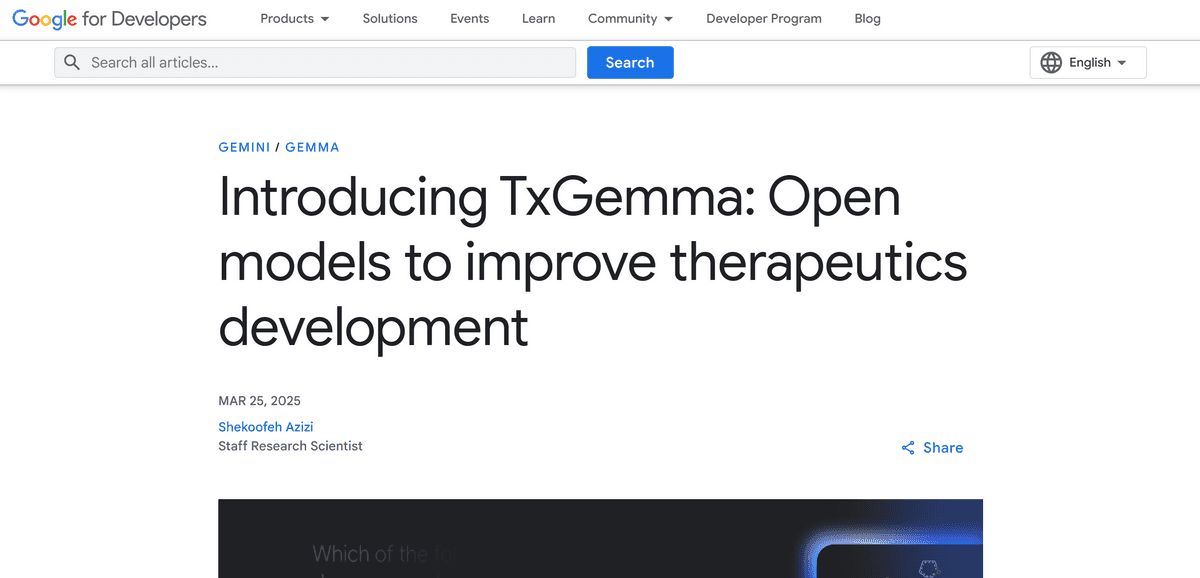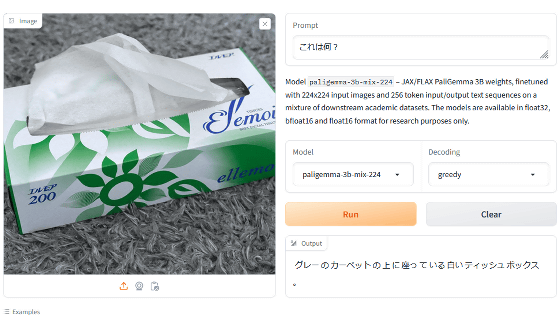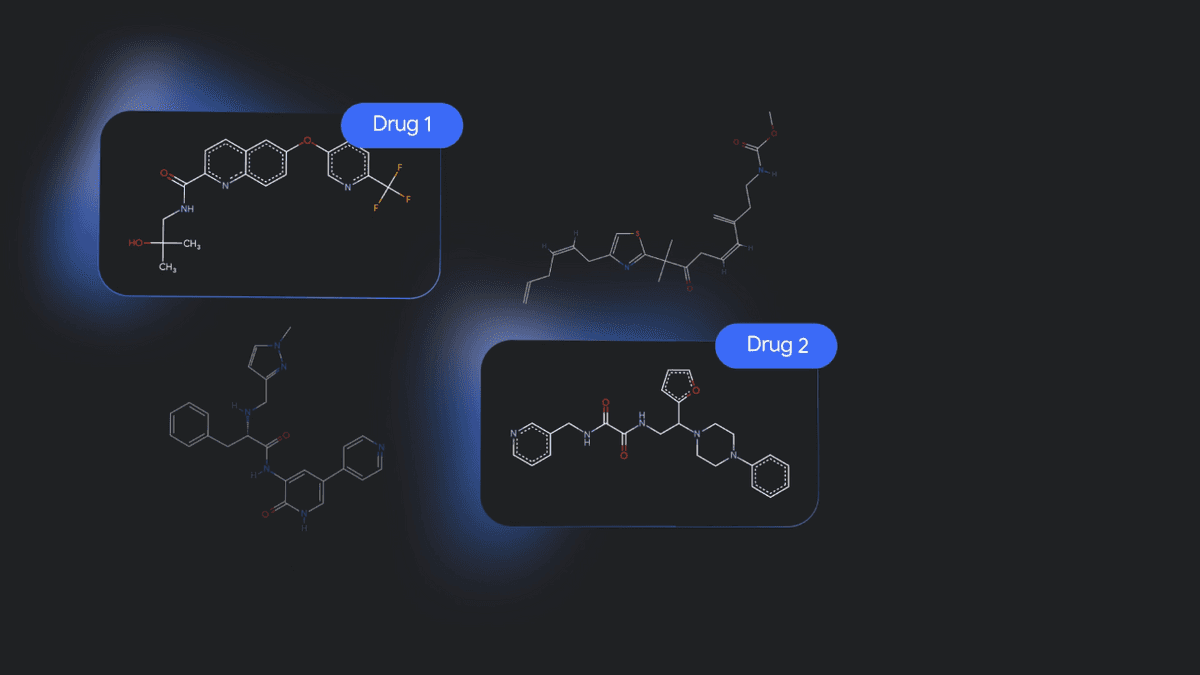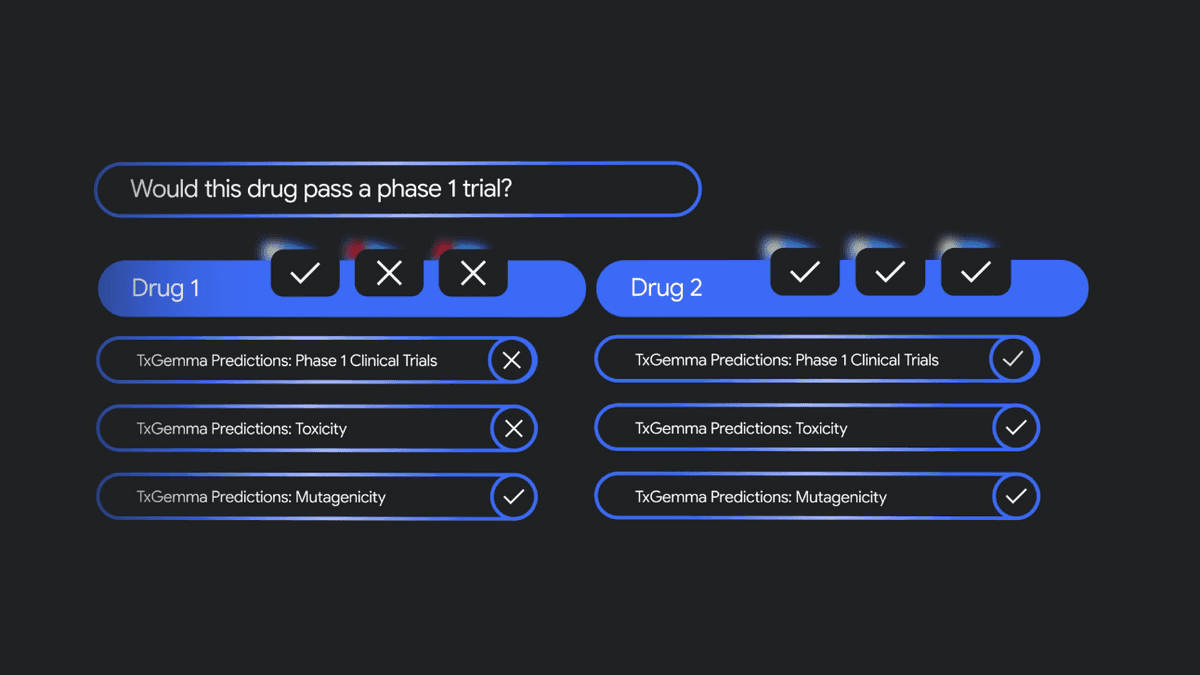Google releases 'TxGemma' to improve drug development with AI as an open model, available to anyone

Google has released an AI called 'TxGemma' to help develop new therapeutic drugs. It can identify promising targets and predict the results of clinical trials, and it can also explain the reasons. It is an open model, so anyone can use it.
Introducing TxGemma: Open models to improve therapeutics development - Google Developers Blog
https://developers.googleblog.com/en/introducing-txgemma-open-models-improving-therapeutics-development/

In the development of new therapeutic drugs, even if a candidate drug is created, about 90% of them will drop out in the subsequent clinical trials, and only about 10% will pass the tests and be recognized as a medicine. If the development of candidate drugs is also included, the success rate of new drug development is even lower, and it often takes billions of dollars (several hundred billion yen) and more than 10 years to develop a single new drug.
90% of drugs in development fail to pass clinical trials - GIGAZINE

The new TxGemma is a specially trained model based on Gemma 2 developed by Google DeepMind to help with new drug development, and can understand the properties of therapeutic substances to identify promising targets and predict the outcomes of clinical trials. 'This could potentially reduce the time and cost of going from the lab to the clinic,' Google said.
Google releases open source visual language model 'PaliGemma' and announces large-scale language model 'Gemma 2' with performance equivalent to Llama 3 - GIGAZINE

TxGemma is a fine-tuned model of Gemma 2 using 7 million examples, and is divided into a 'prediction' model and a 'conversation' model. The prediction model has 2 billion parameters, 2B model, 9 billion parameters, and 27 billion parameters, and the 27B model has been released simultaneously, and is specialized for tasks extracted from the Therapeutics Data Commons as follows.
Classification
Tasks such as 'Does this molecule cross the blood-brain barrier?'
Regression analysis
Tasks such as predicting drug binding affinities
·Generate
The task of generating a set of reactants from the products of a reaction.
The 9B model with 9 billion parameters and the 27B model with 27 billion parameters have been released. The conversation model is trained to explain reasoning, answer questions, and have multi-turn discussions. For example, a researcher can receive an explanation based on the molecular structure for a question such as 'Why did you predict that a particular molecule is toxic?'
A video showing how to develop a new drug using TxGemma has been posted on X.
Introducing 🥁🥁TxGemma!
— Omar Sanseviero (@osanseviero) March 25, 2025
🧪LLM for multiple therapeutic tasks for drug development
🤏2B, 9B, and 27B
🤗Fine-tunable with transformers
🤖Agentic-Tx for agentic systems
Blog: https://t.co/nTqoWgmgoF
Models: https://t.co/dlcvuYdH6j pic.twitter.com/OOaAZrBhds
First, TxGemma narrows down the candidates.

Then, by asking questions such as 'Does it affect genes?', 'Is it toxic?', and 'Can it pass Phase 1 clinical trials?', the team can further narrow down the candidates and efficiently decide which drugs to develop.

TxGemma is an open model, so anyone can download and use
the model from Hugging Face, and can also fine-tune it to adapt it to their own treatment data and tasks. A Colab notebook is also available for reference on how to fine-tune, so please check it out if you are interested.
Related Posts:






